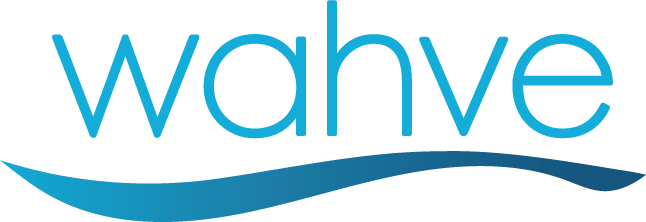Preserving Institutional Knowledge While Future-Proofing Your Workforce Strategy
Turnover in the insurance industry has quietly become one of the most expensive and disruptive forces facing firms today. In Canada, a wave of retirements, talent shortages, and shifting workforce expectations is leaving insurers vulnerable to lost expertise, longer onboarding cycles, and declining service quality.
While data on Canadian-specific turnover rates is limited, industry experts widely agree that we are seeing a parallel trend to the United States, where the U.S. Bureau of Labor Statistics reports an annual turnover rate exceeding 20% in insurance. Anecdotally, the impact is deeply felt across brokerages, MGAs, and carriers throughout Canada—especially in specialized or legacy roles that require years of on-the-job knowledge.
In this context, traditional hiring strategies are no longer sufficient. The most forward-looking organizations are turning to flexible staffing models that allow them to preserve expertise, reduce onboarding time, and adapt with agility to a rapidly changing landscape. One standout example is WAHVE (Work at Home Vintage Experts), which connects insurance firms with highly experienced, retired professionals who work remotely on a flexible basis.
The Real Cost of Turnover in Insurance
Turnover affects insurance organizations in several high-impact areas:
- Financial Costs: The Society for Human Resource Management (SHRM) estimates the cost to replace an employee is between 50% to 250% of their annual salary, depending on role complexity. In insurance, that cost is often higher due to licensing, regulatory onboarding, and specialized systems training.
- Lost Productivity: Claims adjusters, underwriters, and compliance officers require extensive knowledge of products, regulations, and internal systems. The time-to-productivity for a new insurance hire can range from 6 to 12 months, making high turnover a direct hit to team efficiency.
- Client Impact: Relationships are central in commercial and personal lines insurance. When long-standing advisors leave, policyholders may question the firm’s stability and service consistency—leading to diminished trust and potential book-of-business attrition.
- Knowledge Drain: Insurance is a detail-intensive industry. When experienced professionals leave, they take years of institutional knowledge with them—much of which is undocumented. This weakens internal decision-making and mentorship capacity.
Why Traditional Hiring Models Are Falling Short
Recruiting full-time, in-office replacements for every departing employee is not only costly—it is misaligned with current workforce trends. Many professionals nearing retirement are not interested in full-time roles, yet they are willing and highly capable of contributing in a reduced or flexible capacity. At the same time, younger professionals are seeking mobility, development, and better work-life balance, making retention a persistent challenge.
Additionally, hybrid and remote work expectations have become standard. According to a recent Deloitte Global Insurance Outlook, insurers who fail to modernize their workforce strategies risk falling behind on innovation, customer service, and employee satisfaction.
A New Talent Model: Tapping into Phased Retirees
This is where the WAHVE model adds distinct value. By connecting insurance firms with experienced professionals who have “retired” from traditional roles but want to work remotely on a flexible schedule, companies gain access to top-tier talent without the overhead or delay of conventional hiring.
Key advantages of this model include:
- Reduced Onboarding Time
WAHVE professionals typically have 25–30+ years of experience in claims, underwriting, brokerage operations, or compliance. They require minimal training and can contribute from day one. The result: decreased time-to-productivity and faster ROI. - Preserved Institutional Knowledge
These professionals are often former managers, directors, or long-standing staff with deep understanding of industry systems, workflows, and customer expectations. By re-integrating them into part-time or project-based roles, insurance firms safeguard critical knowledge and avoid starting from scratch with each new hire. - Operational Flexibility Without Compromise
With WAHVE’s flexible staffing approach, firms can scale up during peak seasons—like renewal cycles or catastrophe response periods—without committing to permanent hires. This enhances agility while maintaining service levels. - Cultural Fit and Compliance
Unlike gig or offshore labor, WAHVE’s experts are vetted for cultural alignment, industry-specific knowledge, and North American regulatory understanding. That means better integration with existing teams and less risk of miscommunication or compliance errors.
Real-World Use Cases
Insurance organizations across North America have adopted this model to:
- Maintain continuity during mergers or restructuring
- Backfill niche technical roles without lengthy searches
- Support digital transformation projects with legacy system expertise
- Train junior staff through informal mentoring by phased retirees
According to WAHVE’s internal data, clients report significant cost savings and productivity gains—not just through reduced recruiting spend, but also through lowered turnover and enhanced client retention.
Final Thought: Rethinking the Talent Lifecycle
Insurance firms that want to remain competitive in a fast-evolving landscape must challenge outdated assumptions about retirement, hiring, and remote work. Flexible staffing is not just a stopgap—it is a strategic differentiator. Models like WAHVE’s prove that retaining access to industry veterans can fortify organizational memory, ease operational transitions, and create more sustainable talent pipelines.
As turnover continues to erode margins and morale, insurers must look beyond traditional solutions. The future of insurance staffing is not just about replacing what was lost—but about evolving smarter, more adaptable ways to preserve what still works.

0 Comments